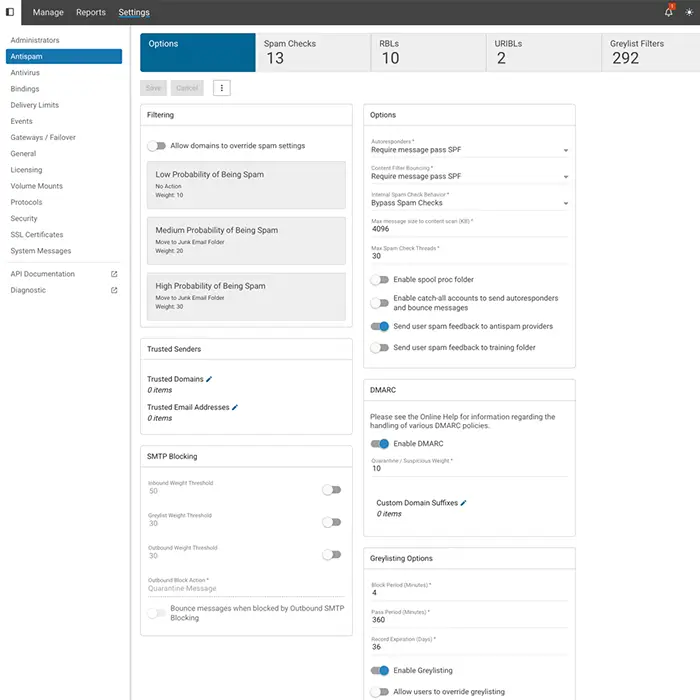Why these matter
SPF, DKIM, and DMARC are complementary authentication methods that tell receivers whether a message truly comes from your domain—and how to treat failures.
Quick definitions
SPF: Authorizes sending servers via DNS.
DKIM: Cryptographically signs messages to prevent tampering.
DMARC: Aligns From: with SPF/DKIM and sets a policy (none, quarantine, reject).
How SmarterMail helps
SmarterMail’s anti-spam options consider authentication results; DMARC is central to trusted-sender status in webmail.
Recommended rollout
Publish SPF & DKIM for your primary domain and any sending services.
Add a DMARC record with p=none to collect reports.
Fix alignment failures (spoofing services, mis-configured senders).
Move to p=quarantine, then p=reject to actively block spoofing attempts.
The bottom line
With phishing on the rise, organizations that enforce DMARC (p=reject) measurably reduce spoofed mail reaching users.

